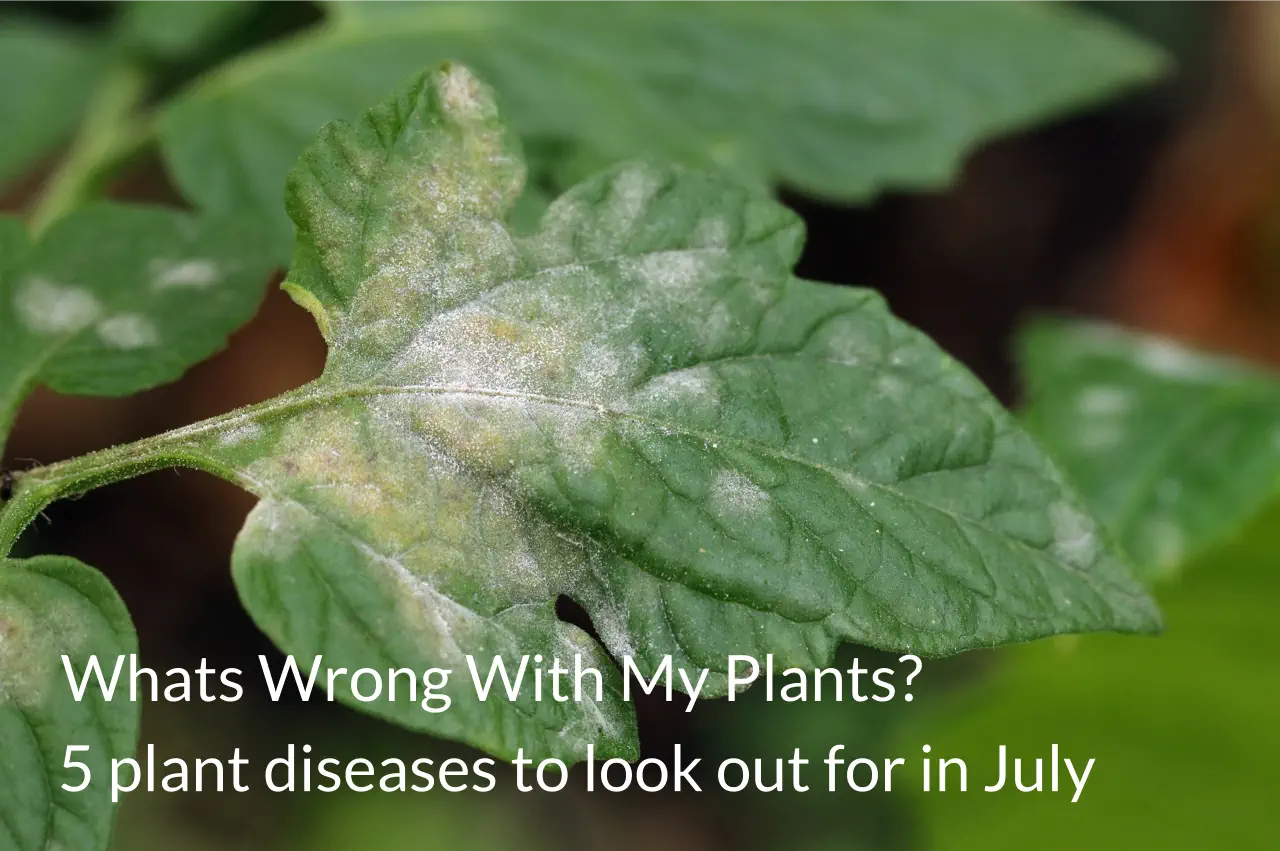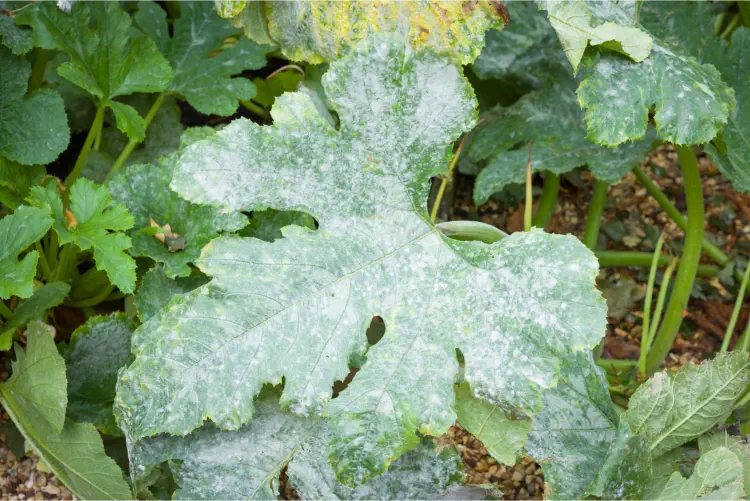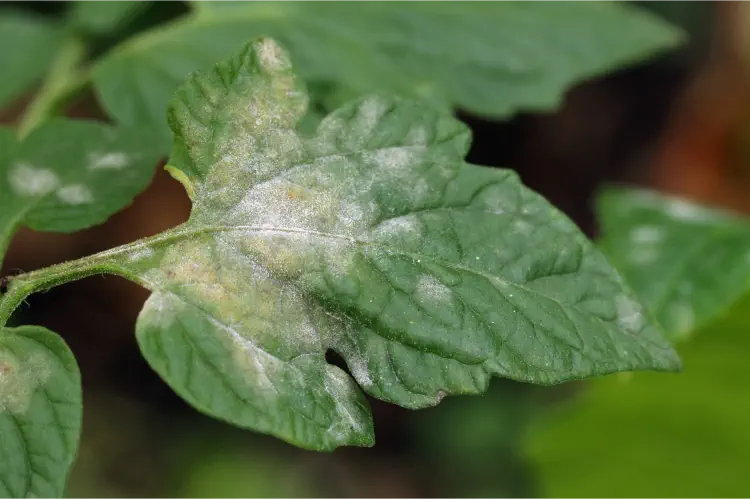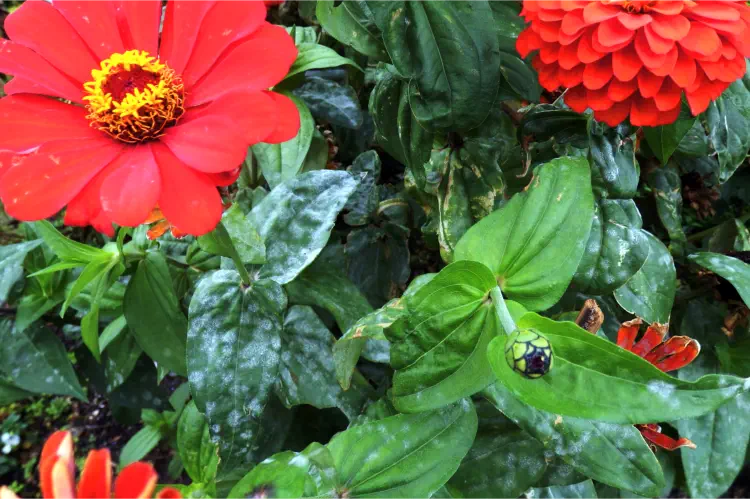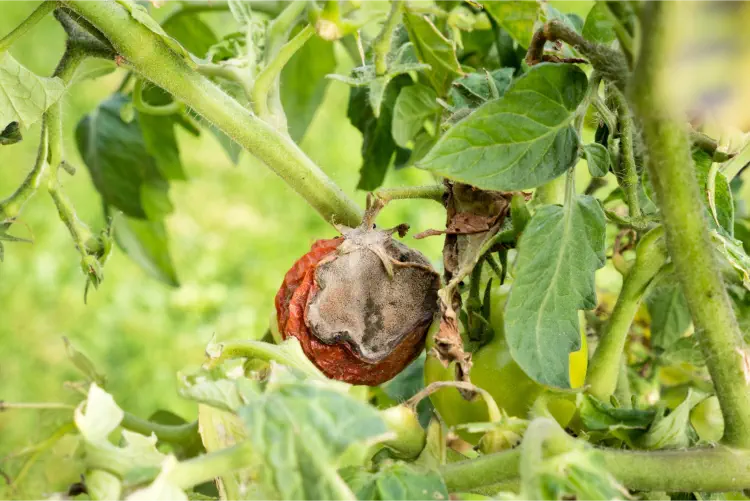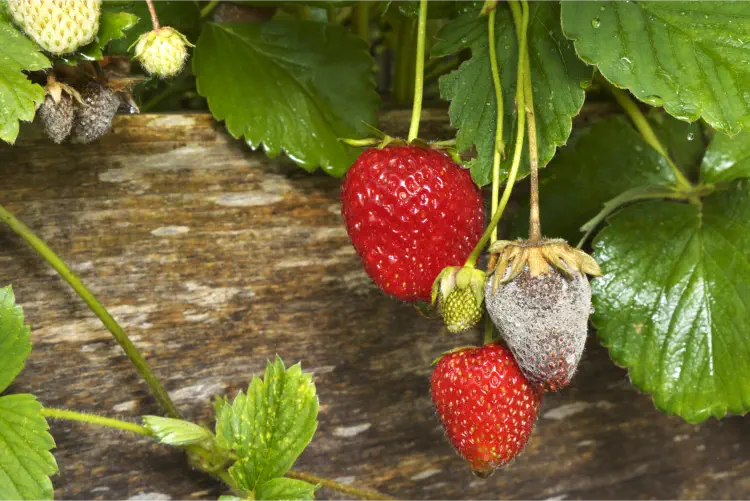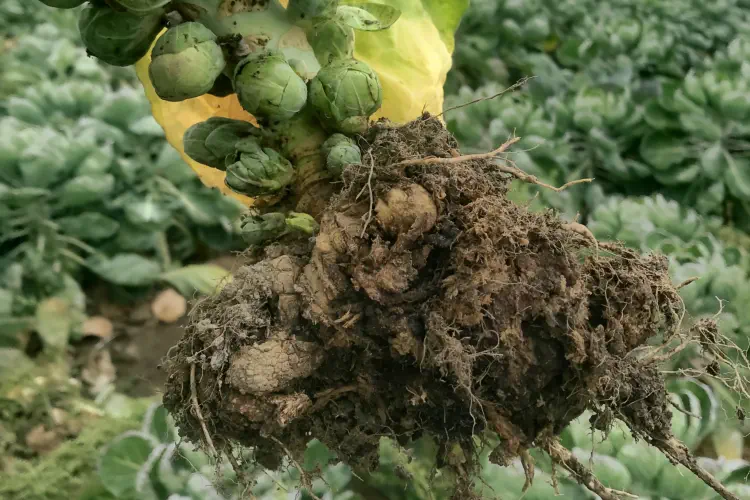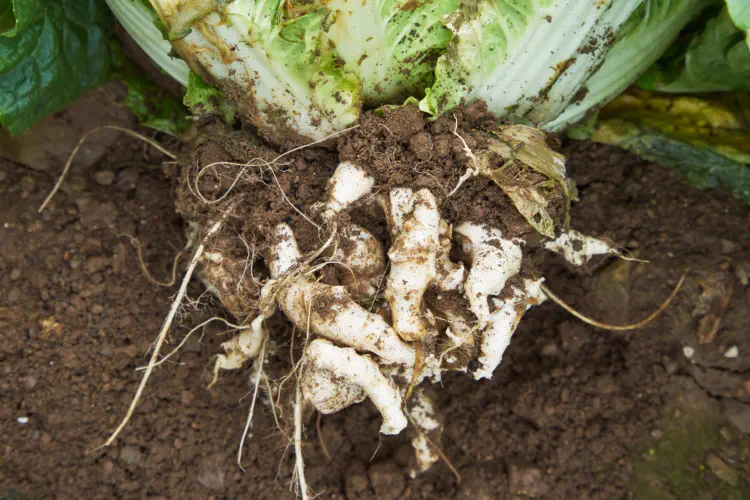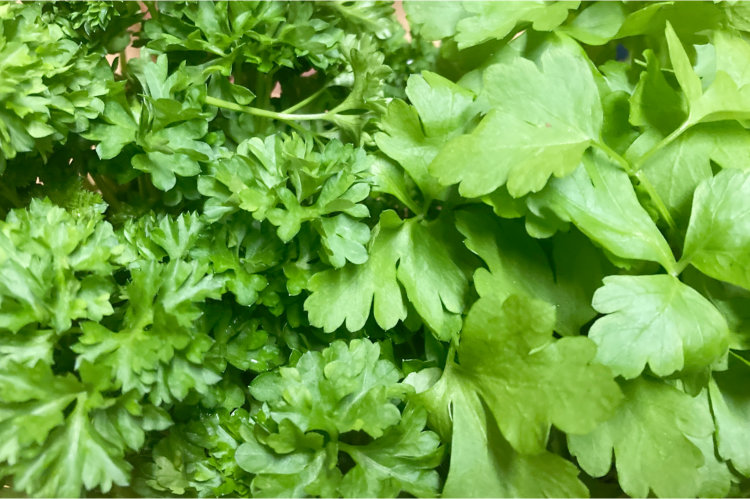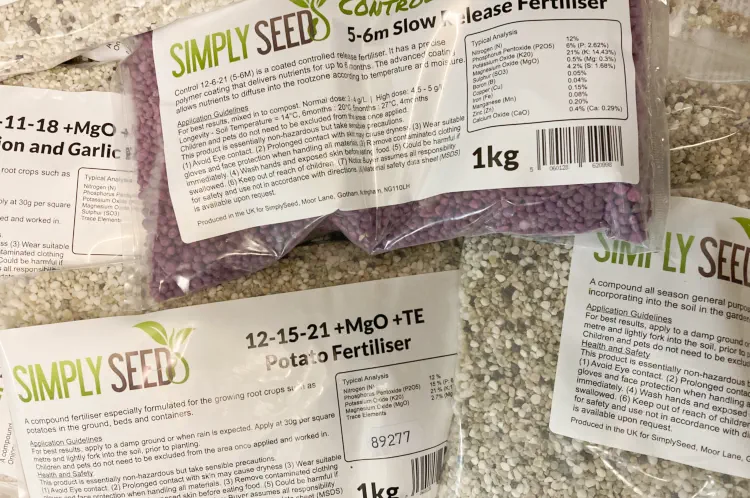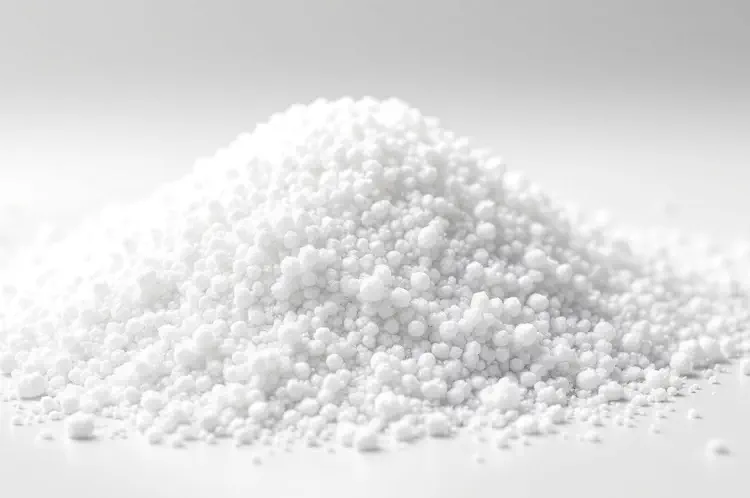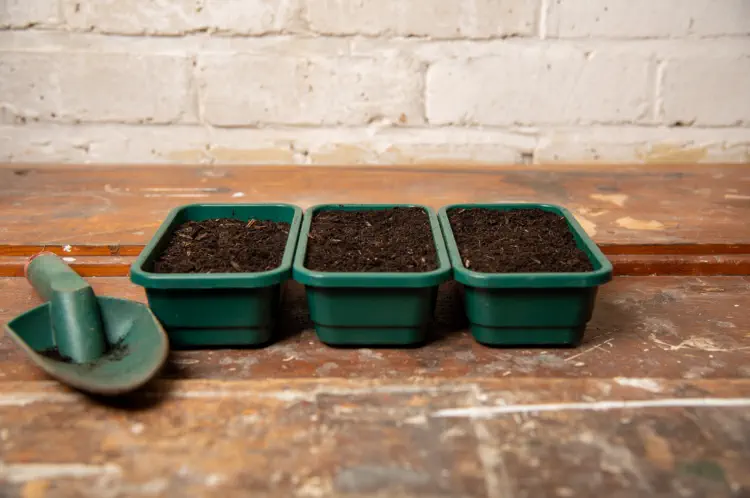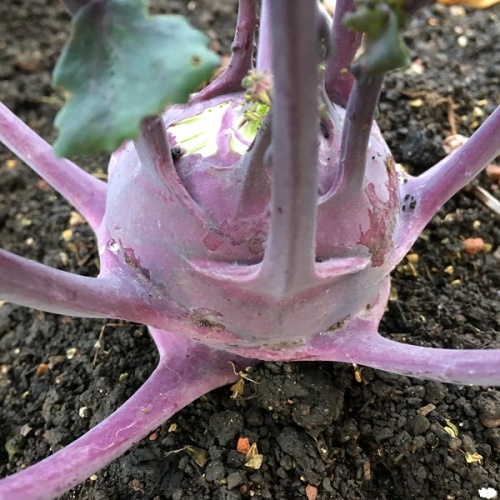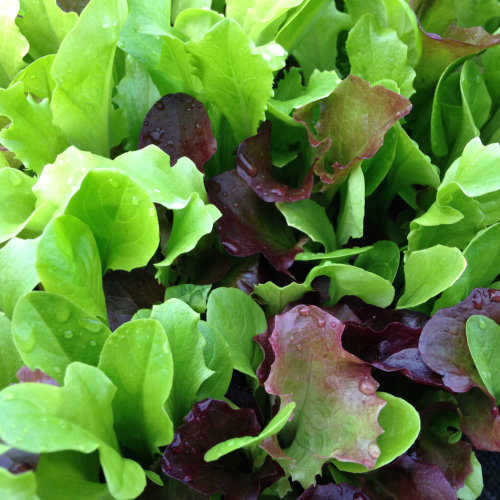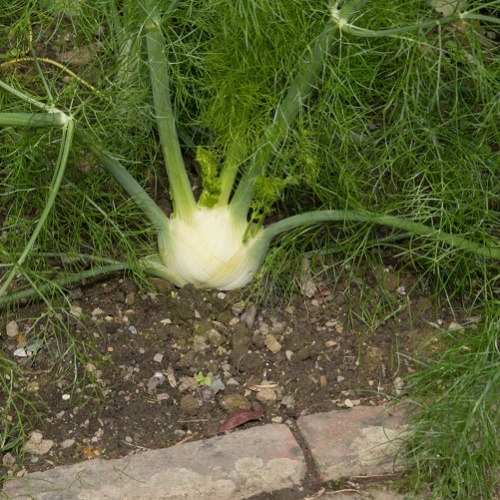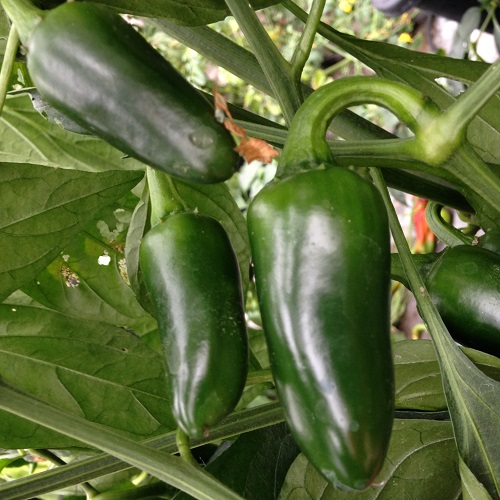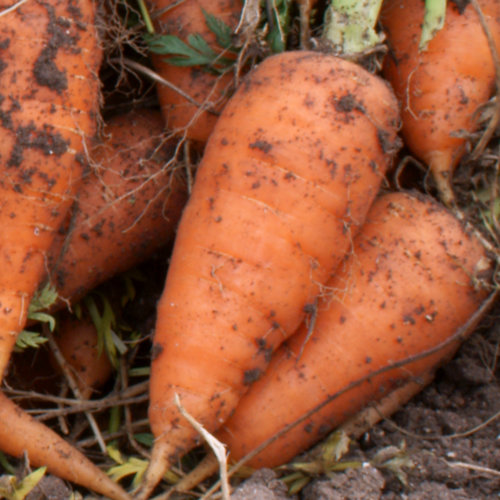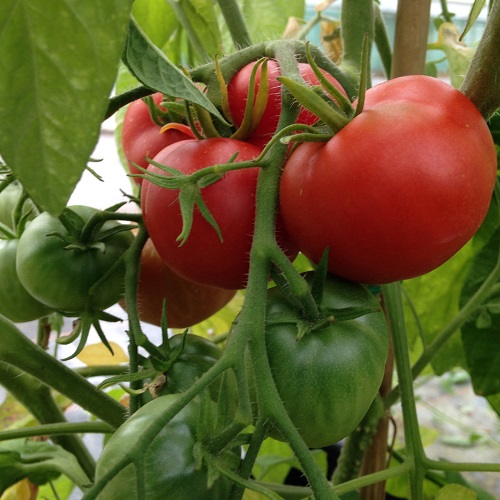As July’s warm sunshine brings growth to UK gardens they also bring several common garden diseases. If left unchecked these diseases can turn your lovely gardens into a war zone against the microscopic invaders.
Whether you’re an old hand or a beginner, knowing these potential threats and how to manage them is key to a healthy garden. Our Blog post looks at 5 garden diseases to watch out for this July and how to prevent and treat them.
Now you’re equipped to keep your plants strong and your garden blooming all summer.
1. Powdery Mildew
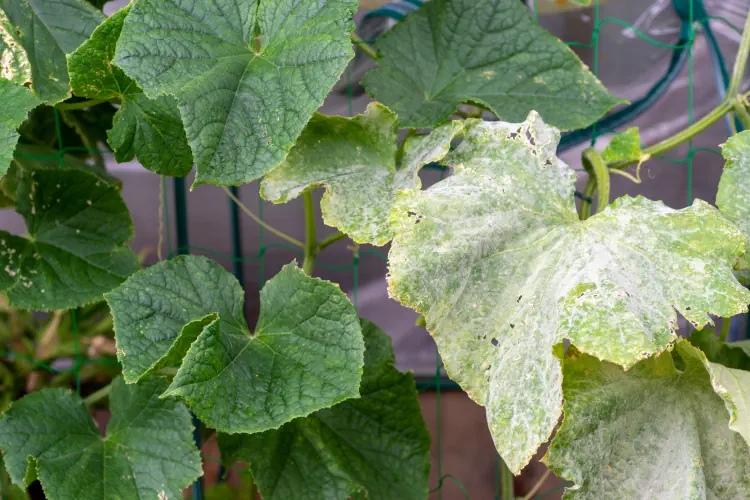
Powdery mildew is a fungal disease that shows up as a white or grey powdery substance on leaves, stems and buds. It’s caused by several species of fungi including Erysiphe, Podosphaera and Golovinomyces. Unlike many fungal diseases powdery mildew loves warm dry conditions so it’s a common problem in the summer, especially in July. The spores are blown by the wind and can infect plants quickly especially in areas with poor air circulation.
Powdery mildew can affect:
-
Roses: One of the most common ornamental plants to be affected, often shows symptoms on leaves and flower buds.
-
Cucumbers and Squashes: Cucumber and Squash plants are very susceptible, mildew shows up on the leaves.
-
Grapes: Leaves and young grapes are affected, fruit quality is impacted.
-
Apples: Apple trees show symptoms on leaves and fruit, reduced yield.
-
Various Ornamentals: Many other garden plants including zinnias, dahlias and phlox are also affected.
Mildew on Cucumber Leaves
Managing powdery mildew involves both prevention and treatment:
Prevention:
-
Air Circulation:
-
Watering:
-
Resistant Varieties:
-
Mulching:
Treatment:
-
Fungicides:
-
Remove Infected Parts:
-
Milk Spray:
-
Baking Soda Solution:
Regular monitoring and early intervention is key to managing powdery mildew. By following these prevention steps and acting fast when you see the first signs of infection you can keep your plants healthy and have a bountiful beautiful garden all summer.
2. Blight (Late Blight)
Affected Plants:
-
Tomatoes: Foliage and fruit. Infected fruit shows dark, greasy looking spots which can spread fast and rot the entire fruit.
-
Potatoes: Foliage and tubers. Infected tubers develop brown, dry rot which extends into the flesh making them inedible.
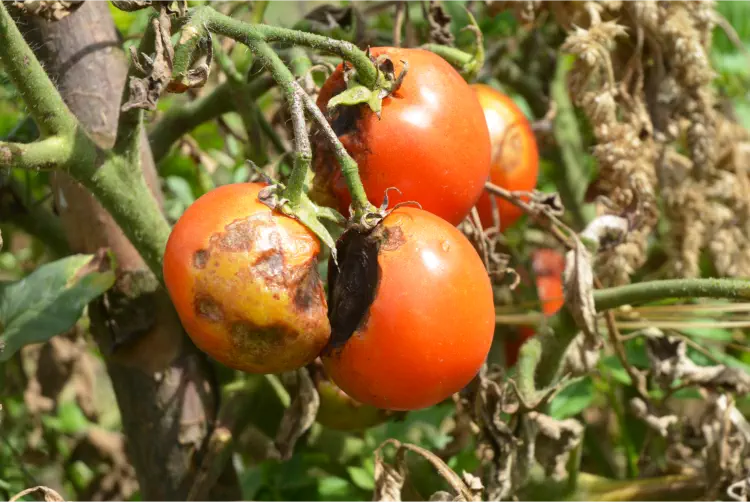
Blight on Tomatoes
Late blight is a deadly plant disease caused by the pathogen Phytophthora infestans. It affects tomatoes and potatoes and can cause big crop losses if not managed well. Late blight thrives in cool wet conditions and spreads fast, so it’s a big problem during rainy July. Symptoms start with water soaked spots on leaves which quickly turn into large dark brown lesions with a greenish edge. In humid conditions a white fuzzy mold appears on the underside of leaves and stems which is the spore producing structure of the pathogen. If left unchecked late blight can kill entire plants and infect tubers making them inedible.
Prevention and Treatment:
Managing late blight involves monitoring, cultural practices and resistant varieties and fungicides:
Prevention:
-
Resistant Varieties:
-
Air Circulation:
-
Watering:
-
Mulching:
-
Crop Rotation:
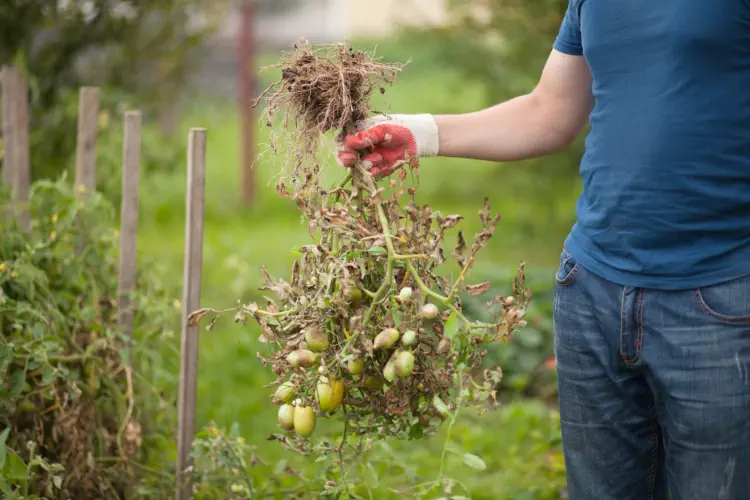
Treatment:
-
Remove and Destroy Infected Plants:
-
Monitor and Act Fast:
-
Sanitize Garden Tools:
More:
By following these prevention and treatment methods gardeners can reduce the risk of late blight. Monitoring and acting early is key to managing this nasty disease and a healthy garden.
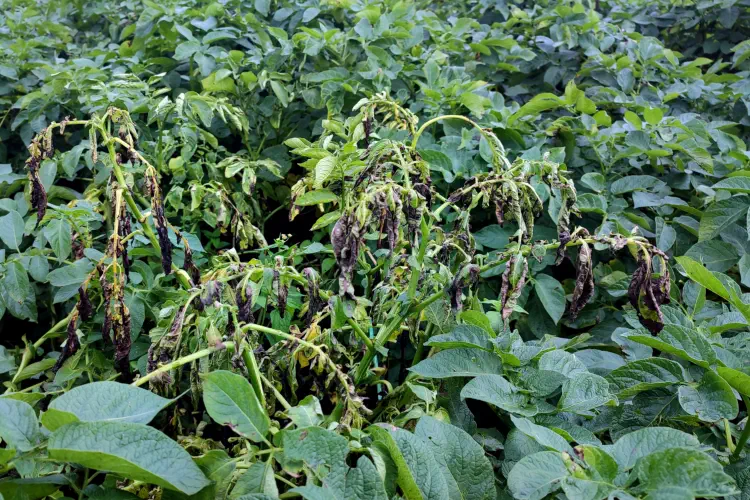
Blight on Potatoes
Late blight is a devastating disease caused by the oomycete pathogen Phytophthora infestans. It affects both tomatoes and potatoes and can cause significant yield loss and crop failure if not managed. It’s most prevalent in cool, wet weather so is a big problem during summer, especially in July when the weather is variable.
Symptoms in Potatoes:
-
Foliage and Stems:
-
First symptoms are dark, water soaked spots on leaves.
-
Lesions enlarge quickly and turn dark brown or black with a greenish edge.
-
White, fuzzy mold (sporangia) appears on the underside of leaves and stems in humid conditions.
-
Infected foliage will collapse and die within a week of infection.
-
Tubers:
-
Tubers develop firm, dark brown or purple lesions.
-
Under the skin a reddish brown, dry rot extends into the flesh often with a foul smell.
-
Secondary infections by bacteria and other fungi can cause soft rot and total tuber decay.
-
Infected tubers may look healthy at harvest but develop symptoms later in storage.
Prevention and Treatment:
Prevention:
-
Resistant Varieties:
-
Planting:
-
Crop Rotation:
-
Watering:
-
Mulching:
-
Spacing and Air Circulation:
Treatment:
-
Remove and Destroy Infected Plants:
-
Fungicides:
-
Regular Monitoring:
-
Sanitise Tools and Equipment:
Storage Tips for Potatoes:
-
Harvest Timing:
-
Curing:
-
Storage:
-
Store cured potatoes in a cool, dark, well ventilated area at 4-10°C (40-50°F).
-
Check stored potatoes regularly for late blight and remove any infected tubers immediately.
Late blight is a big threat to both tomato and potato crops but with regular monitoring, good cultural practices and resistant varieties, gardeners can manage and reduce its impact. By knowing the symptoms and using the right prevention and treatment methods you can protect your garden from this disease and have a good harvest.
3. Black Spot
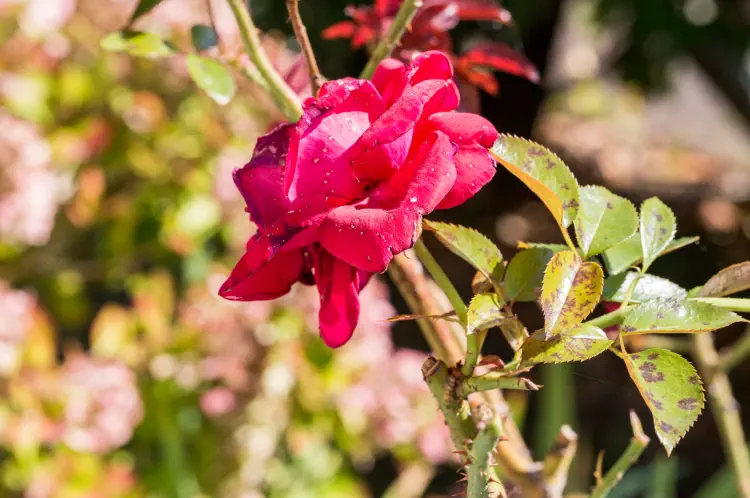
Black spot is a common and serious fungal disease caused by Diplocarpon rosae. It affects roses mainly and shows up as round black spots with fringed edges on the upper surface of the leaves. The spots can cause the surrounding leaf tissue to yellow and turn chlorotic. Severely affected leaves will drop off which weakens the plant over time. Black spot loves warm and humid conditions and spreads through water splashes from rain or irrigation so it’s a big problem during summer.
Affected Plants:
-
Roses: Main target, severe infestations will cause significant defoliation and reduced plant vigor.
-
Other Ornamentals: Occasionally affected, but roses are the most susceptible.
Prevention and Treatment:
Prevention:
-
Spacing and Air Circulation:
-
Space plants far enough apart to allow good air circulation which will reduce humidity and dry leaves quickly.
-
Prune plants regularly to remove overcrowded growth and improve air circulation within the plant canopy.
-
Watering:
-
Mulching:
-
Mulch around the base of the plant to prevent water splashes from the soil which can spread fungal spores to the leaves.
-
Organic mulches like wood chips or straw also retain soil moisture and reduce weeds.
-
Sanitation:
-
Remove and dispose of fallen leaves and plant debris especially those showing signs of infection to reduce source of fungal spores.
-
Don’t compost infected leaves as the spores can survive and reinfect the plant.
-
Resistant Varieties:
Treatment:
-
Fungicides:
-
Apply fungicides as a preventative or as soon as you see the disease. Organic options are sulfur or neem oil and chemical fungicides like myclobutanil, chlorothalonil or trifloxystrobin.
-
Follow the label instructions for application rate and frequency.
-
Monitoring:
-
Pruning:
-
Prune and dispose of infected leaves and stems immediately to prevent the disease from spreading.
-
Make clean cuts back to healthy tissue and sterilize pruning tools between cuts to avoid spreading the spores.
-
Fertilization:
More:
-
Regular Care: Good care of your plants will make them healthier and more disease resistant.
-
Weather Awareness: Check the weather forecast. Extended wet weather requires more vigilance and possibly more fungicide applications.
Black spot is a tough disease for rose growers but with regular preventative measures and timely treatment its impact can be minimized. Good garden hygiene, resistant varieties and fungicides when needed will keep your rose bushes healthy and blooming all season. Monitoring and quick action is the key to managing black spot and keeping your garden a vibrant and disease free haven.
4. Grey Mold (Botrytis Blight)
Grey mold caused by the fungus Botrytis cinerea is a common and devastating plant disease. This pathogen can infect many plants and appears as fuzzy grey mold on flowers, leaves, stems and fruits. Grey mold thrives in cool and damp conditions especially when temperatures are between 15-21°C and humidity is high. Spores are spread through air and can cause extensive damage if not managed properly.
Commonly found on:
-
Strawberries: Infected fruit develops soft brown spots that spread rapidly and cover the berries in grey mold.
-
Grapes: Berries develop brown or grey mold and bunch rot.
-
Tomatoes: Grey mold on fruit, stems and leaves causing rot and decay.
-
Ornamentals: Many ornamental plants like geraniums, peonies and begonias are susceptible to Botrytis blight showing symptoms on flowers, leaves and stems.
Treatment:
Prevention:
-
Air Circulation:
-
Watering:
-
Water at the base to keep foliage and flowers dry.
-
Water early in the day so any moisture on the plants can dry quickly.
-
Avoid overhead watering especially during cool and wet weather.
-
Sanitation:
-
Regularly remove and dispose of dead or decaying plant material as Botrytis cinerea can overwinter in plant debris.
-
Clean up fallen leaves and plant debris around the garden to reduce sources of infection.
-
Mulching:
-
Resistant Varieties:
Treatment:
-
Remove and Destroy Infected Plant Parts:
-
Fungicides:
-
Apply fungicides as a preventative measure especially during cool and wet weather. Organic options are neem oil and sulfur based fungicides. Chemical fungicides like chlorothalonil or iprodione can also be used.
-
Follow label instructions for application rates and frequency.
-
Monitoring:
-
Environmental Controls:
More:
-
Disease Resistant Varieties: When planning your garden choose varieties of plants that are resistant to grey mold.
-
Proper Fertilisation: Avoid over fertilising with nitrogen as it promotes lush growth which is more prone to disease.
Grey mold (Botrytis blight) is a big problem in the garden and can cause damage to many plants. But with regular monitoring, good cultural practices and timely intervention gardeners can manage this disease. By improving air circulation, good sanitation, proper watering and fungicides when needed you can protect your plants from grey mold and have a healthy garden.
Regular checking and quick action is key to keeping this pesky pathogen away and overall garden health.
5. Clubroot
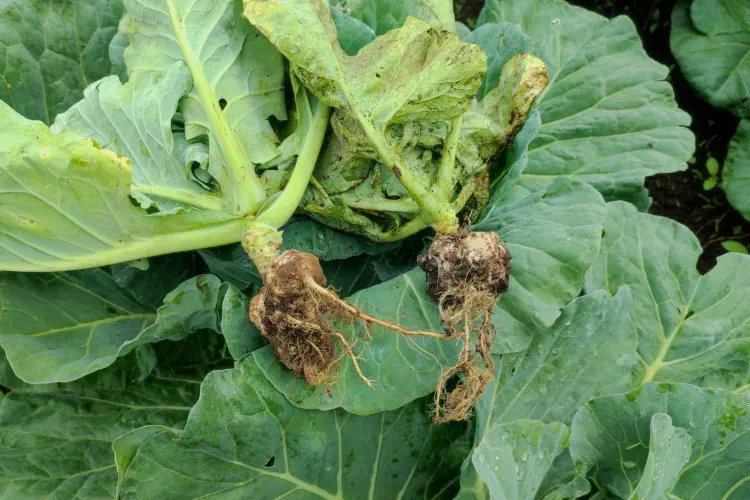
Clubroot is a serious soil borne disease caused by Plasmodiophora brassicae. It affects the roots of brassicas (cabbage family) causing them to swell and distort into club shapes. The disease prevents the plant from taking up water and nutrients, resulting to stunted growth, yellowing leaves and overall poor health. Clubroot thrives in acidic and wet soils making it a big problem in poorly drained gardens. Infected plants often wilt during the day and recover at night, a sign of root dysfunction.
Affected Plants:
-
Cabbage: Infected roots swell and distort, resulting to stunted growth and poor head formation.
-
Broccoli: Plants are stunted and yellowing with reduced or deformed heads.
-
Brussels Sprouts: Affected plants produce smaller and deformed sprouts.
-
Cauliflower: Infected plants are stunted with small and misshapen heads.
-
Kale and other Brassicas: All members of the cabbage family can be affected, showing root distortion and stunted growth.
Clubroot on Brussel Plants
Clubroot on Chinese Cabbage Plants
Prevention and Treatment:
Prevention:
-
Crop Rotation:
-
Soil Drainage:
-
Soil pH Management:
-
Raise soil pH to 7.2 or higher by applying lime (calcium carbonate). Clubroot spores are less active in alkaline conditions.
-
Get a soil test to know the current pH and follow the recommended liming rates.
-
Hygiene:
-
Resistant Varieties:
Treatment:
-
Remove Infected Plants:
-
Soil Solarization:
-
Disease Suppressive Amendments:
-
Transplant Management:
Disease Management Tips:
Regular Check-ups:
-
Check Plants Often:
Cultural Practices:
-
Spacing and Pruning:
-
Watering:
Sanitation:
-
Clean Up Plant Debris:
Resistant Varieties:
-
Choose Disease Resistant Plants:
Chemical Controls:
-
Use Fungicides and Treatments Sparingly:
-
Use fungicides and other chemical treatments as a last resort, follow label instructions carefully.
-
Integrate chemical controls with other management practices for a holistic approach to disease prevention and treatment.
Clubroot is a tough opponent for brassica growers but with prevention and management strategies in place its impact can be reduced. By improving drainage, managing pH, good hygiene and choosing resistant varieties you can protect your brassicas from clubroot and have a healthy garden. Regular monitoring and being proactive with disease management is key to keeping your plants healthy.
Conclusion
As we look at the diseases in July in the UK it’s clear that proactive management is the key to a thriving garden. From the sneaky spread of powdery mildew to the devastation of clubroot on brassicas each disease requires attention to detail and prompt action.
By taking preventive measures like improving air circulation, proper watering and choosing resistant varieties gardeners can reduce the risk of infection. Regular monitoring and quick response to early symptoms can make a big difference in controlling outbreaks before they affect plant health.
Remember a healthy garden isn’t just about green leaves and flowers – it’s a reflection of the care and attention you put into your plants. By incorporating these into your gardening practices you not only protect your plants but also have a garden that’s vibrant and thriving and brings you joy all season long.

